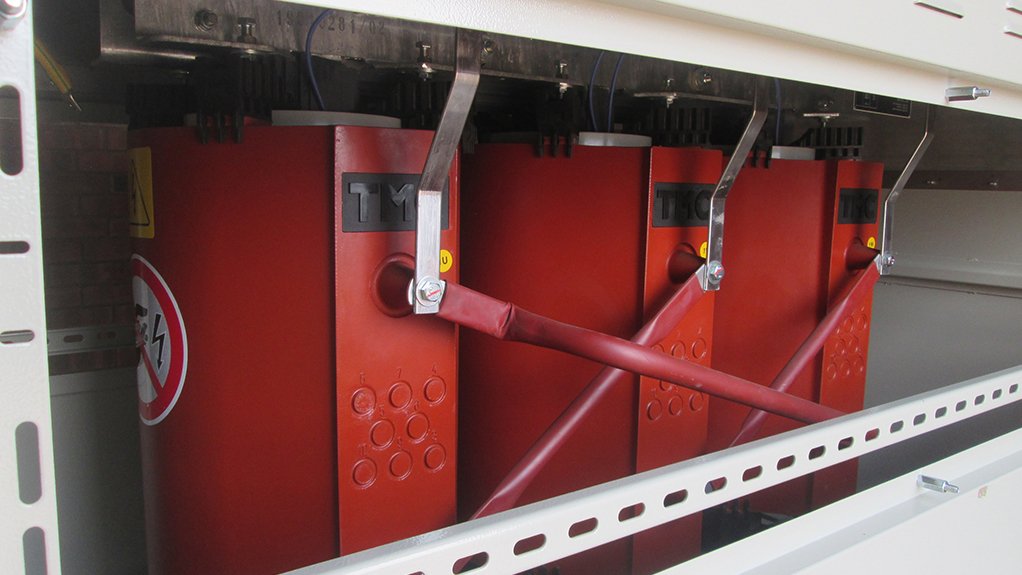
A 400V/22kV step-up transformer designed for renewable energy applications.
A focus on application engineering allows Trafo Power Solutions to supply customised dry-type transformers for a range of sectors including renewable energy.
“We begin at the proposal stage by engaging closely with the customer about the exact application and electrical load,” says David Claassen, managing director of Trafo Power Solutions. “This means that every project gets its own transformer design, so that it is fit for purpose.”
In the case of renewable energy applications, for example, there are some very specific demands that need to be accommodated. A solar power generating plant presents a situation in which a transformer will be energised from zero to 100% on a daily basis.
“This leads to wide fluctuations in temperature inside the transformer which, in turn, causes the resin around the windings to expand and contract considerably,” says Claassen. The windings in dry-type transformers are insulated in a cast resin or epoxy material, rather than oil, and rely on air movement for cooling.
“Such fluctuations could result in the resin cracking, so the design must specify the appropriate class of insulation to cope with these conditions,” he says. “We can design our windings for either a Class F or a Class H insulation. In addition, the mixture of the resin is specially formulated to accommodate the duty cycle specific to renewable energy applications.”
The standard design – using Class F – can deal with temperatures up to 155 degrees Celsius. For many of Trafo Power Solutions’ low voltage and high voltage installations around Africa, the design includes a resin mix to Class H specifications. This gives it the capacity to withstand temperatures of up to 180 degrees Celsius.
Another aspect that needs to be considered for renewable energy applications is the non-linear load that inverters add to the mix. The transformers need to be designed with a K-Factor much higher than used for standard distribution type loads as well as the addition of an electrostatic shield between the primary and secondary windings, to eliminate potentially damaging leakage currents.
Claassen notes that dry-type transformers are being increasingly specified for demanding applications such as renewable energy plants, instead of conventional oil transformers.
“With an oil-cooled unit, the temperature fluctuation arising from these rapid and regular energising and de-energising cycles brings its own challenges,” he says. “In particular, it causes more gases to be emitted within the transformer tank, which leads to a variety of problems.”
The cast resin material used in Trafo’s dry-type transformers meets the specifications of the International Electrotechnical Commission (IEC) for fire class F1. The units therefore present minimal fire risk, allowing them to be used indoors safely, and without environmental protection like bund walls for potential oil spills.
Claassen says dry-type distribution transformers are fast becoming a more suitable alternative to oil transformers, especially in the distribution power range between 50 kVA size and 10 MVA, although Trafo Power Solutions is able to supply dry type transformers up to a power rating of 25MVA